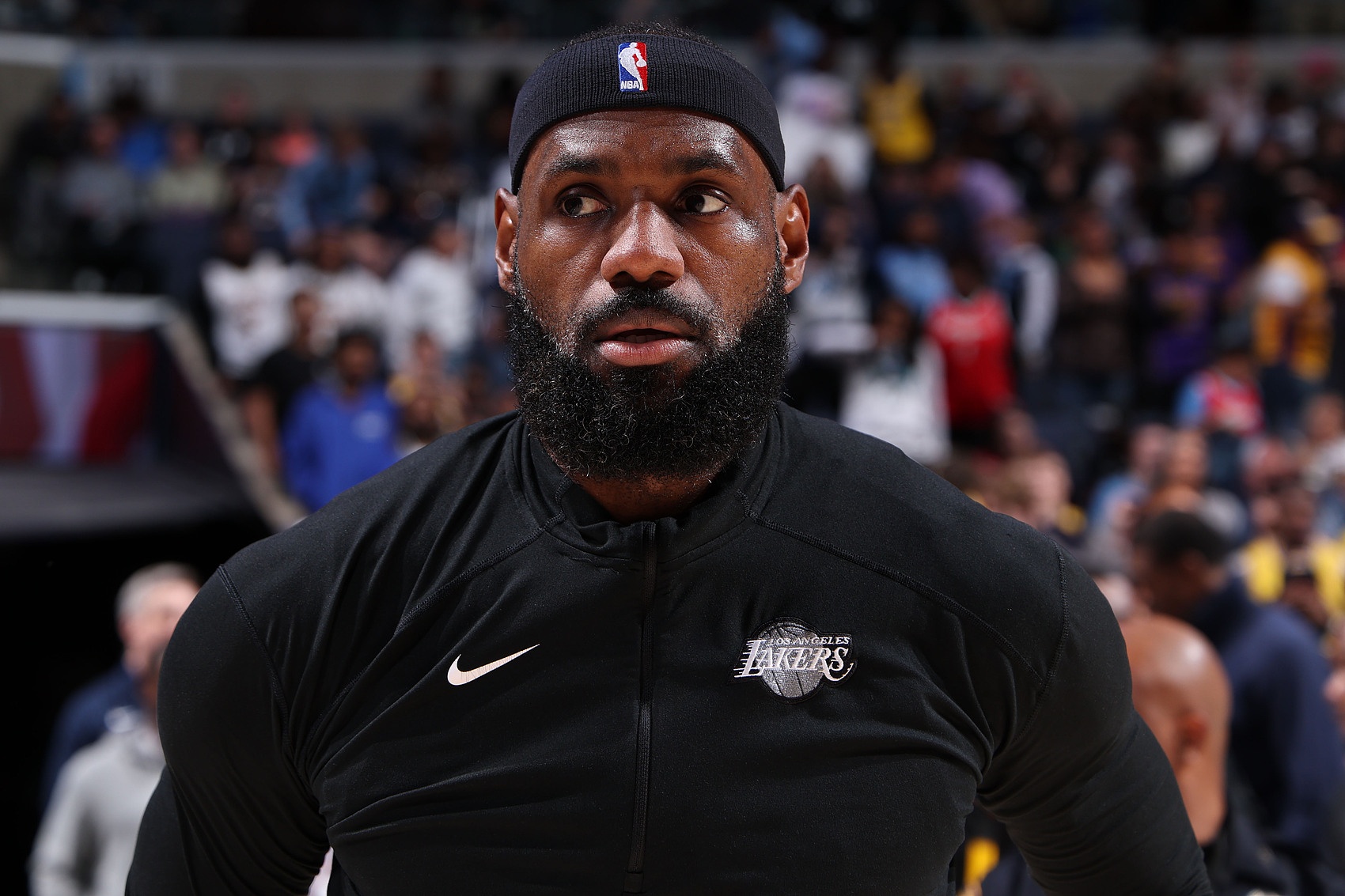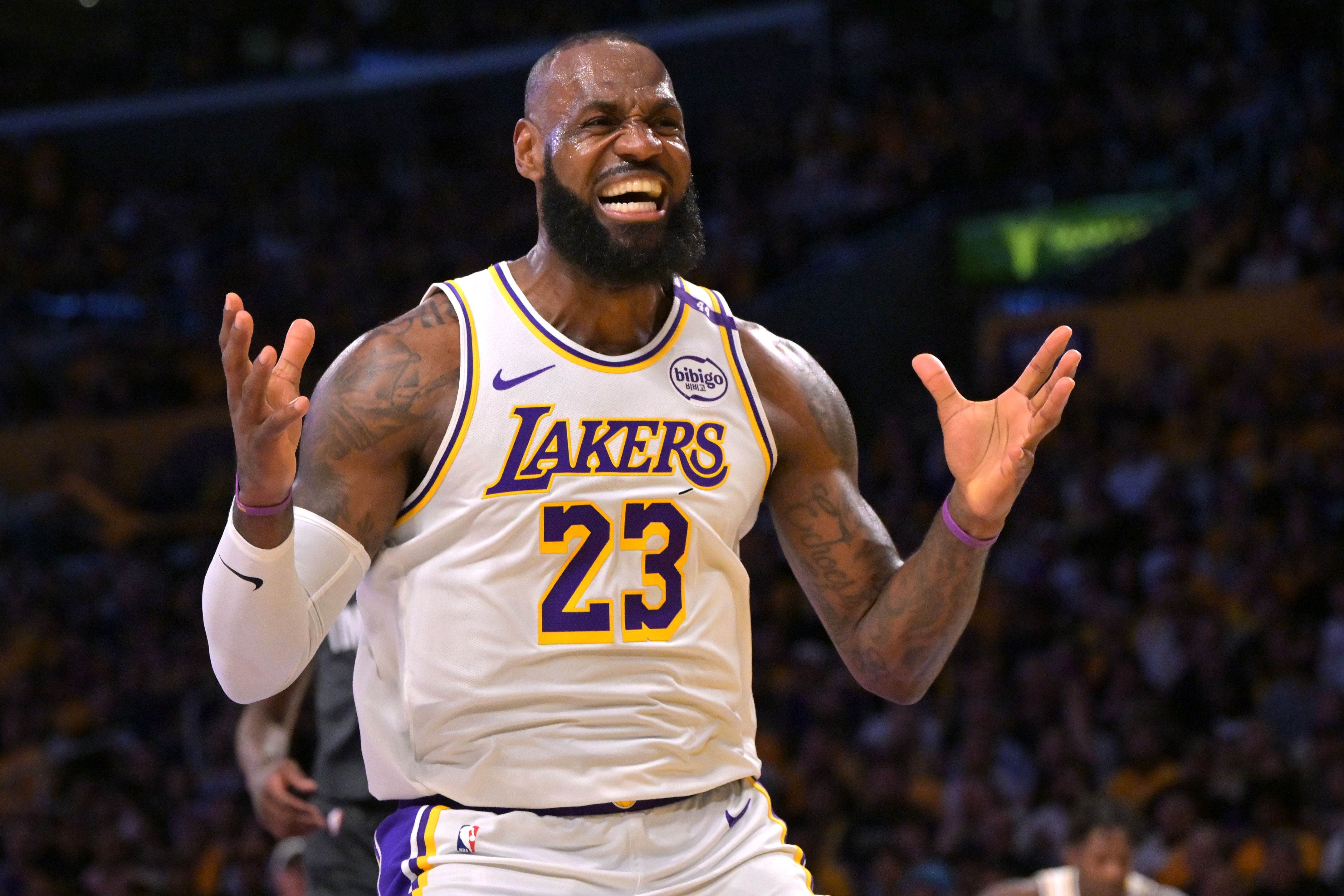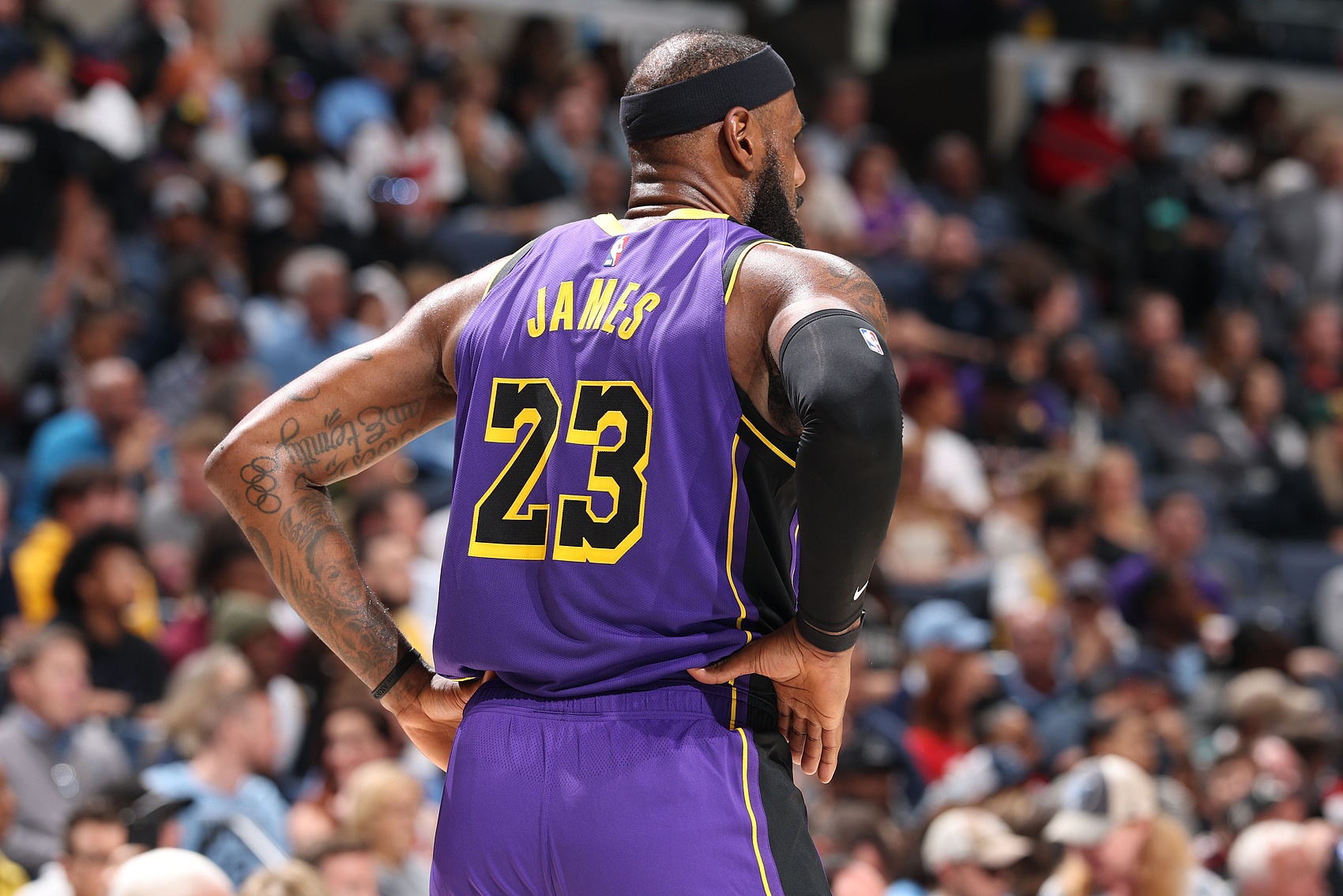ZunSports > Basketball > The strong team cannot afford it 😫 is subject to the new version of the labor and capital agreement, and it is almost impossible for James deal to happen
The strong team cannot afford it 😫 is subject to the new version of the labor and capital agreement, and it is almost impossible for James deal to happen

(The original article was published on July 5, and the author is Sam Quinn of CBS Sports. The content of the article does not represent the translator's views)
James's becoming a free agent has always been a shocking event in the NBA. Before entering the free agent market in 2010, the scene where each team spent several years cleaning up the salary space was still vivid in my mind. In the first 11 days of July 2014, the entire league almost came to a halt. After James finished his four-game finals with the Heat, executives of each team flew to Cleveland first, and then turned to Las Vegas to start a chase.
Over the past two decades, almost all major events in the NBA have been deeply related to James. Although he has only experienced a few free agent transfers, each transfer has brought the championship trophy to his new owner. This may be the greatest player in basketball history, but he was unexpectedly cold in the market over the past week, and the league's enthusiasm for competing is significantly lower than expected.
Not long ago, James chose to execute the last year player option for the Lakers contract. The statement released by its agent Ritchie Paul implies that the decision is not entirely out of its original intention: "James is eager to compete for the championship," Ritchie Paul told ESPN. "He knows that the Lakers are planning for the future. Although he understands the team's planning, he values the real chance of winning the championship more."
Whether the Lakers have the realistic possibility of winning the championship depends on their opinion, but at least for the moment, the Lakers have not made every effort to create a championship lineup for James. When wing champion Finney Smith chose to sign a four-year contract with the Rockets, the Lakers let the key free agent go for nothing because they were unwilling to match the contract. Despite introducing Ayton and Laravia through the free agent market, the Lakers remained unchanged in major deals. Before the trading deadline, the Lakers were willing to give out last year's first round pick, the first round pick in 2031 and the first round swap rights in 2030 for Mark Williams, but these chips are still in the Lakers.
The Lakers seem to be rebuilding slowly around Doncic, but James can't wait for this rhythm. The 40-year-old superstar still maintains his top competitive form, just won the MVP vote for sixth and was selected for the second team of the best team, and his remaining career has not been around for several years. Judging from the wording of Ritchie Paul's statement and subsequent reports, the Lakers should not take it for granted that they can renew their contract with James next summer. Considering that the Lakers are turning to the team building direction of "youngering and athletic ability", it is not even certain whether the management still has the will to leave James behind.

In other words, the Lakers are likely to be just squeezing James' surplus value for the last year and then watching him leave the team as free. If the Lakers do not intend to really hit the championship in this last year, they should decisively trade James, and there is no vague space here. When a 40-year-old veteran can still exchange assets that match the reconstruction timeline, if the team does not intend to cooperate with his championship window, there is no reason to force him to stay. But the key to the problem is: it is not clear whether James can really get his ideal bargaining chips.
James has a trade veto, which means that if the Lakers decide to trade him, he can control where he goes, but it is presumed that the roster of teams he is willing to join may be very limited. However, to our knowledge, none of these potential next-tier companies have made a offer. NBC Sports reporter Kurt Helin revealed that the Cavaliers were "not very interested" and it seemed that there was no hope of returning home for a second time; when New York Post reporter Stefan Bondy confirmed the rumors of the Knicks, the source bluntly said that it was "purely a topic of conversation"; ESPN reporter Dave McMenamin learned that the Mavericks "only consider buying out the market", even if there is a possibility that James will reunite with Irving and Davis.
The team building cycles of these teams are completely different from those of the Lakers: the Cavaliers' total salary has exceeded the second-large tyrant line of $20 million, the Knicks just used six first-round picks to exchange for veterans, and the Mavericks even used Doncic, who was in his year of playing, to exchange for six-year-old players. In theory, these teams should be eager for James, but in reality, this is not the case. Age is certainly a factor of consideration, but since the age of 40 is still super huge, it is highly likely that the age of 41 can maintain its level. The real obstacle is financial terms, and the new labor agreement is killing the possibility of a James deal, just like many other potential operations in the near future. Although these teams can theoretically get James (the era of the old labor-capital agreement may have come true), the current "James battle" has ceased before it has really started. How does the new version of the labor-capital agreement kill the possibility of James' deal?
Before the 2023-24 season, the salary matching rules for NBA trades are very simple: no matter what the trading background is, the team can always absorb and send a contract of 125% of the salary + $100,000. Take James' annual salary of $52.5 million as an example:
Cavaliers plan: Jarrett Allen (20 million) + DeAndre Hunter (23.3 million) has a total of 43.3 million, which can match a salary of 54.1 million, which completely covers the James contract;
Knicks plan: Mikal Bridges (24.9 million) + Josh Hart (19.5 million) has a total of 44.4 million, which can match a salary of 55.5 million, which also meets the requirements;
Mavericks plan: Although it is impossible to match with two players, Klay Thompson (16.6 million) + PJ-Washington (14.1 million) + Daniel Gafford (14.4 million) has a total of 45.1 million, which can match a salary of 56.37 million, which still meets the standards.

From a pure basketball perspective, these were originally reasonable trading frameworks. The deal with the Cavaliers could have brought high-quality centers and wingers to the Lakers, the Knicks' plan could provide two forwards to replace James and Finney Smith, and the Mavericks' offer would allow Doncic to win three familiar role players. But under the new regulations, all of these transactions cannot be realized.
Due to the use of the Mini Middle Class Special, both the Knicks and the Mavericks have triggered the second rich line's hard salary cap. As of the time of writing, the Mavericks have only about $1 million left to the hard salary cap, and the Knicks have less space. They cannot complete the transaction by giving away balanced chips that are much lower than James' salary as they did in the past, and now they must achieve very accurate salary matching. The Knicks must at least take on an important contract like Mitchell Robinson to reach a deal; after considering the integrity of the lineup, the Mavericks may need to send two of Marshall, Max Christie and Caleb Martin. What's more difficult? The Lakers also triggered the hard salary cap of the first rich line due to the use of full middle-class exceptions, and the deal with the Knicks or the Mavericks may even require the introduction of third-party teams.
As for the Knight, it is difficult to achieve even the exact match of salary. Although the hard salary cap has not been triggered at present, packaging a contract in the transaction will trigger the hard salary cap of the second rich line. The Cavaliers' current salary has exceeded the second rich line by about $20 million, and no one in the team can match James' salary. This means that any deal involving James must include Garland, plus two of Jarrett Allen, DeAndre Hunter and Struce to be in compliance.
Trades that were originally compliant and in line with basketball logic three years ago suddenly became no longer feasible. The salary requirements faced by the Cavaliers, the Knicks and the Mavericks make the transaction extremely expensive at the cost level. No matter how capable James is, this deal is likely to be unrealistic. So suddenly, most teams that James may like are basically excluded. When these teams no longer actively compete for him, there seems to be a lack of motivation to force James to put pressure on the Lakers to really start trade negotiations. Is it possible that the

transaction will come true?
Maybe possible, maybe impossible. At least four teams have contacted Ritchie Paul for the deal, according to ESPN reporter Dave McMenamin. We have no way to know the specific roster of the team, nor do we know if James is interested. But if we only look at the list of reasonable trading targets, most teams face some insurmountable salary barrier.
For example, the Warriors tried to get James before the 2024 trade deadline. Now to reach a deal, they must include Butler as their salary balance chips. When the Lakers are working on rejuvenating their lineup and improving their athletic ability, will they be willing to pay an extra year of salary for a veteran? The answer is likely to be no. It may be possible to introduce a third-party team, but the Heat had personally verified the difficulty of trading Butler earlier this year.
The Clippers can keep James in Southern California, but they are currently triggering the hard salary cap of the No. 1 rich line by signing Big Lopez with full middle class exceptions. They still have about $13 million in space to get a hard salary cap, and there is indeed room for operation. But considering that Harden, Leonard and Zubac are likely to be non-selling products, the Clippers must package contracts for multiple role players to match the deal. If they really mean it, why didn’t they directly renew Paul George last summer? The Clippers obviously adhere to the team building philosophy of "dual-star core + deep lineup". It is hard to imagine that they will change their established plans for James.
The trading market does have a certain interest in James, but this is essentially a problem of intersection. There are both teams that are willing to trade for James and those that James is willing to play for, but there are almost no teams that can meet these two conditions at the same time. Teams that have the ability to help James compete for next year's championship have a very bloated salary structure, and the transaction flexibility is the most restricted. The emerging young teams may be the exception, but they are often reluctant to make significant investments in players of James’ age. If the Spurs really had this intention, they could have directly fought for Durant.
As of now, there are almost no substantive reports on James' position on the current situation of the Lakers' offseason operation. Given the disappointing level of these operations, he is unlikely to be more confident in the team than he was a week ago. Meanwhile, the Lakers' motivation to retain him may be weaker than last month. Now not only has the defending champion Thunder become the number one favorite in the West, but the Rockets and the Nuggets have also completed targeted reinforcements. Even if the Lakers retain their lineup this season and add centers, their actual chances of competing for the championship have dropped in this competitive environment, and trading James is a reasonable choice for them.
However, there is no evidence that any party is actively promoting the transaction, which may not necessarily be due to the lack of willingness to trade between the parties, but is more likely to be based on the perception of the reality of the current labor agreement: unless a certain branch clearly expresses that the suitor is willing to distort the salary structure more extreme than before to introduce the 40-year-old superstar, the two parties are likely to be forced to continue to cooperate. If James really had a strong desire to compete for the championship, he would have chosen to jump out of the contract and accept a basic salary to join his favorite team. All 30 teams at this price will be interested in him. But under the iron-fisted rules of the new version of the labor-capital agreement, it is almost impossible for any championship-level team to swallow $52.6 million in salary. This objective limitation, far more than any current move by James or the Lakers, explains why it is unlikely that a real James battle will appear this summer.
Original text: Sam Quinn
Compiled by: Li Taibai
Related Posts
Missed 6 games in a row! Team reporter: Embiid’s right knee is still sore and the doctor thinks the condition is improving
BasketballAccording to 76ers reporter Keith Pompey, Embiid's knee is still sore. Doctors think his condition is improving, but it will still take some time. Embid has missed 6 consecutive games. source: 7m cn english...
moreGoodbye, point guard god! Shams: Chris Paul announced that he will retire after this season!
BasketballAccording to Shams, a famous reporter, Chris Paul announced on social media that he will retire after this season! Paul wrote on social media: "Back to North Carolina... What a wonderful journey... I still have a lot of reluctance... I am very...
moreFamous speaker: If the Pacers mess up, it may be the Spurs biggest gain after they mess up and get Duncan.
BasketballFamous mouthpiece Zach Lowe said on the show that the Pacers have a poor record. If they continue to suffer, this may be the best result since Duncan went to the Spurs. Zach Lowe said that just one year after reaching the Finals, the Pacers had a di...
more
Hot Posts
- Nash: You and James have a lot of similarities. Doncic: What about bounce? 😄
- James: One of the assistant coaches who trains with Brownie every day is Harden s teammate
- Top 13 players with salary next season: Jendoku is selected together, Bill is in a mess, and the emperor continues to make money on his own?
- Team Note: People around Doncic told me that his mentality is to win in the present 👍
- Hamstring injury! Nurse: Watford has not yet conducted 5-on-5 training and there will still be some time before return
- Come back soon! Tatum’s Twitter recovery check-in: 6 months ✅
- Seal the throat with one sword! Gillespie hit a mid-range shot and scored 20 points, 7 rebounds and 4 assists on 7-of-12 shooting.
- An estimated annual salary of 3,000w + stay in the team! Buha: Reeves is eager to play for the Lakers for life
- Famous reporter Lowe: I think Shin Kyung is a better passer than Antetokounmpo
- They were beaten by the Jazz in the last game and beat the Suns by 27 points in this game. Bill: Our effort level was different tonight.
Recent Posts
-
76ers player 2K ability value: Maxi +1 to 90 VJ -1 to 80 McCain -4 Drummond +2
-
Redick: Doncic s dunk was a bit unexpected, but it was so exciting. It was great to see him release his emotions.
-
👀Stein: Nuggets are trying to convince Valan to stay in the NBA, Kings Nuggets deal remains unchanged
-
3 years, 44 million renewal! Bucks GM: Portis has other options this summer but he wants to stay with the team
-
Full of energy! Christie made 7% of 12 shots, 26 of 26 three-pointers, and scored 23 points on 5 of 9 three-pointers. He made two solid free throws at the last moment.
-
Kwamey spits Arenas: You clown, you spend money to let someone put my dead mother online!
-
One person show! Antetokounmpo sent out consecutive highlight singles and directly stopped the Knicks
-
Rapper 6ix9ine made a scandal about Mrs. Ku! The next day, my home was robbed, and netizens ridiculed that the trouble came from the mouth.
-
Dunleavy: Sometimes it’s best for players to change environments, but we and Kuminga found a way
-
Spoelstra: Ware performed very well. It s gratifying to see him respond like this.